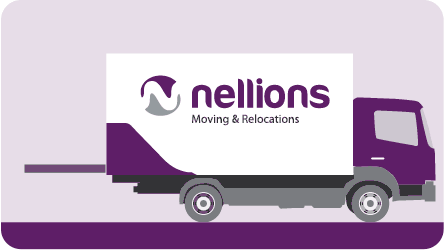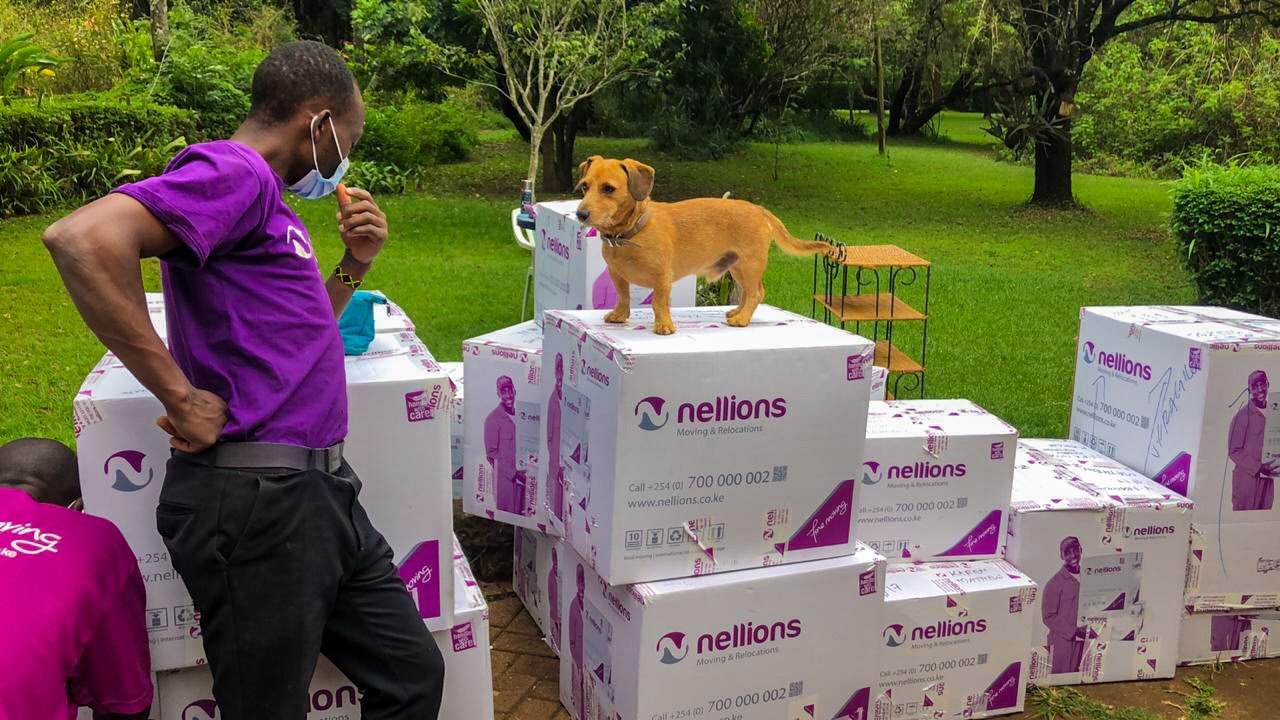Last updated on February 22nd, 2023 at 04:30 pm
Also known as the land of the free and the home of the brave, the United States of America is a country of 50 states that cover a vast swath of North America.
Apart from the 50 states, the federal republic that is the United States of America consists of a federal district that serves as its capital city, five major territories, and several minor islands.
Washington, D.C. (District of Columbia) is both the capital city and the only federal district of the United States. Since the city is also the seat of several international organizations such as the World Bank Group and the International Monetary Fund, it’s an important world political capital.
Meanwhile, the five permanently inhabited, unincorporated territories of the United States comprise:
- Guam
- Puerto Rico
- American Samoa
- U.S. Virgin Islands
- Northern Mariana Islands
One of the major reasons nearly everyone can relate to the United States is the country’s ability to export its western values and way of life globally. America’s popular culture, whether pushed by Hollywood, the music industry, or even capitalistic ideals, has spread worldwide.
Since the American way of life appears very alluring, it’s hardly surprising, therefore, that many people dream of visiting or immigrating to the United States. Indeed, it’s a happy coincidence that the International Association of Movers is headquartered in Alexandria, Virginia.
All in all, there are several things you should know about the immigration process from Kenya to the USA.
1. Your Movers Will Require Certain Documents Before Packing Day
You should complete and hand over these documents to your mover before the packing day:
- CBP Form 3299—Declaration of free entry of unaccompanied articles
- CBP Form 7501—Entry Summary
- Power of attorney
The U.S. Customs and Border Protection (CBP) relies on CBP Form 7501 to determine relevant information regarding imported commodities. This information can include their origin, classification, and appraisal.
On the other hand, the CBP Form 3299 is required to clear your unaccompanied household goods and personal effects through U.S. Customs. You must check all the applicable boxes herein to declare the items for which you seek duty-free entry into the United States.
As for the signed Power of Attorney, it gives your mover permission to clear your unaccompanied baggage through U.S. Customs on your behalf.
Without these completed and signed documents, your mover can’t arrange customs clearance.
2. Diplomats Must Complete the DS-1504 Form
Unlike non-diplomats who must complete and sign CBP Forms 3299 and 7501, diplomats traveling to the United States must fill out form DS-1504, Request for Customs Clearance of Merchandise.
In fact, diplomats and other foreign government officials holding A-1 or A-2 visas in the United States are not permitted to use CBP Forms 3299 and 7501.
Whether the diplomatic shipment is official, personal, or both official and personal, the consignee must have been notified by the Department of State and be eligible for diplomatic importation privileges. Permanent residents of the United States, for instance, are not eligible.
Additionally, the responsible foreign mission should stamp, initial, and date each copy of the DS-1504 form or use an embossing seal that penetrates all six copies of the form. This form should then be submitted to the Department of State at least 10 days before the shipment’s arrival.
3. Importer Security Filing (ISF) Must Be Filed Before the Deadline
The Customs and Border Protection (CBP) requires that all ocean cargo imports to the United States meet the Importer Security Filing (ISF) deadline.
ISF documents the importing information and details of shipments as they move from point to point. It must be delivered to CBP at least 24 hours before the vessel carrying the shipment is due to make its final departure to the United States.
Ideally, in fact, the information should be submitted electronically to CBP before the vessel is even loaded.
CBP considers ISF crucial because it improves its ability to flag high-risk shipments that could be a safety threat upon arrival in the US. The increased visibility that ISF affords CBP also helps with the control of the smuggling of substances or people inside the United States border.
Failure to file ISF can have serious consequences, such as
- Massive fees/penalties
- Increased inspections
- Delayed shipment
Incomplete or incorrect ISF filing may result in a refusal from CBP to grant the permit necessary to unload or take your merchandise. Your cargo may even be seized by CBP if you go ahead and unload it without the agency’s permission.
When you or your agent complete the Importer Security Filing on time, you won’t have to deal with “Do Not Load” orders on your cargo.
4. Shipments May Be Examined at the Discretion of Customs

Shipments entering the U.S. from any foreign territory have historically been subjected to physical examinations by the U.S. government. The reason is to verify that such cargo complies with U.S. laws and regulations.
Because numerous shipments are entering and departing the United States, CBP uses certain unknown algorithms to evaluate the degree of risk for each shipment.
For ocean freight shipments, CBP uses the mandatory Importer Security Filing (ISF) and Additional Carrier Requirements to evaluate each shipment and flag the ones it deems suspicious.
Certain factors can heighten the chances of an exam:
- It’s your first shipment (Customs may want to establish your legitimacy)
- The shipper (they might be unknown or have a track record of mislabeling goods)
- The goods (they might have a history of inaccurate labeling, reporting, or valuing)
- The place of origin (some cities, countries, or geographic areas are more suspicious)
- Goods were consolidated with suspicious shipments in the same container
- Goods were accompanied by incomplete paperwork
However, even if you did everything right, your shipment may still end up being one of the 3-5% chosen annually for a customs exam.
5. Types of Customs Inspections Your Goods May Receive
There are three common exams that your shipment may receive:
- Vehicle and Cargo Inspection System (VACIS) or Non-Intrusive Inspection (NII)
- Tail Gate Exam
- Intensive Customs Exam
These exams give Customs a chance to look for contraband items or cargo that doesn’t match your paperwork. Typically, if your shipment’s exam raises suspicion, it will be escalated to a more thorough exam.
The table below shows what you can expect from each Customs exam:
| VACIS/NII | Tail Gate Exam | Intense Customs Exam |
| Relatively unobtrusive | More obtrusive | Most obtrusive |
| Involves X-raying the container | Involves breaking the container seal and taking a look inside | Involves transportation to a Customs Examination Station (CES) for thorough inspection |
| Less costly (around $150-$250) | Costs around $150-$350 | Costs around $1000-$2500+ |
| Takes 2-3 days (dependent on traffic and queue) | Takes 3-6 days (dependent on port traffic) | Takes 7-30+ days (depending on shipments in the queue) |
Please note that the inspection cost estimates provided in the table do not include other charges you might be expected to foot. These include:
- Drayage charges for the transportation to and from the inspection site
- CES storage and labor charges for the unloading and reloading of your shipment
- Detention and demurrage costs for keeping your container longer than expected
Since your shipment won’t be released until you’ve cleared all fees, ensure you arrange for prompt payment to avoid further fees and delays.
6. Duty Exemptions for Household Goods and Personal Effects Are Conditional
You can import artwork, dishes, furniture, linens, and similar household furnishings for personal use free of duty.
To qualify for duty-free exemptions, however, these articles must have either been available for your use or used in a household where you were a resident for one year.
This year of use doesn’t need to be continuous, nor does it need to be the one immediately before the date of importation. However, most household items that have been used for less than 12 months will require that duty be paid.
The owner of the household and personal effects must provide on the CBP Form 3299 pertinent details about these goods such as
- Name of items
- Quantity of items
- Material items are made of
- Value (in US dollars) of the items
- Country of origin of the items
Your professional equipment or tools of the trade are also entitled to duty-free consideration if they’re for your personal use. These items don’t have to have been in your household for more than one year to qualify for this exemption.
Gifts or items you intend to give to other people when you arrive in the United States are not considered part of your household or personal effects. As such, they aren’t eligible for duty-free treatment.
There is, however, a duty-free exemption for gifts worth up to $100. Any items above this value are dutiable at the applicable Harmonized Tariff Schedule rates.
Expert Tip: You don’t have to go to the CBP office yourself to clear your exempted household goods and personal effects, and you can ship them to your U.S. address at a later time if you choose (they don’t have to accompany you to the United States).
You may designate a friend or relative to represent you, in which case you must give them a letter addressed to “Officer in Charge of CBP” authorizing them to represent you as your agent on a one-time basis. They must also present a completed CBP Form 3299 to the CBO Officer.
7. Owner of Household Goods Must Hold the Proper Long-Term Visa
To be granted duty-free exemptions when importing household goods to the United States, you (as the owner of these goods) must:
- Be a United States citizen
- Be a U.S. permanent resident
- Hold an A-1 Visa (for diplomats)
- Hold an H-1B Visa (for foreigners working in the U.S.)
You can’t import household and personal effects duty-free into the United States on a B1 or B2 visitor’s visa.
8. Some Ports May Require To See Your I-94
Some ports require a copy of your I-94 Arrival/Departure Record before they can clear your shipment.
Form I-94 is the Department of Homeland Security’s Arrival/Departure Record that’s issued to aliens who are admitted to the United States, who are adjusting their status while in the country or extending their stay, among other things.
While the I-94 is proof of legal entry into the United States, it’s needed by all persons except:
- U.S. citizens
- Returning resident aliens
- Aliens with immigrant visas
- Most visiting (or in transit) Canadian citizens
This means that foreign nationals who are in the United States on a temporary visa, including H-1B, need the I-94. This record can be used to verify their entry date, port of entry, and visa status at the time of admission.
9. Prohibited and Restricted Items You Should Know About
While you can import household goods, furniture, and other personal effects into the United States free of duty and taxes and without a bond, some items might require special precautions.
Antiques that are less than 100 years old, for instance, require a duty. Art, on the other hand, is duty-free as long as you’ve owned it for at least a year and have no plans to resell it.
There are restricted items that may be imported to the United States duty-free but which must adhere to a few restrictions on quantity (such as alcohol, cigarettes, and cigars), or type (such as some kinds of absinthe, firearms and ammunition, medications, and wood).
There are also prohibited items that you might want to leave behind if you’re importing personal items, including
- Products made from endangered wildlife
- Items that infringe on copyright regulations
- Narcotics and medication containing controlled substances
- Ancient artifacts from the Byzantine period, Pre-Columbian era, etc.
- Soil, livestock, and pests
- Cat and dog fur
In fact, all travellers, are required to declare meats, fruits, vegetables, plants, seeds, soil, animals, and any animal and plant products including soup and soup products, that they may be carrying into the United States.
Prohibited items that aren’t declared are confiscated and disposed of by CBP agriculture specialists. Additionally, civil penalties can be assessed and levied for failure to declare these prohibited agricultural products. Penalties may range up to $1,000 per first-time offense for non-commercial quantities.
Expert Tip: Shipments that include restricted or prohibited items attract intense Customs exams. Since the owner of these goods is responsible for paying for the exams and any damage incurred during the inspection, it’s best to avoid shipping such items altogether.
10. The Major Coastlines of the United States

Finally, the United States has two major coastlines, namely the East Coast and the West Coast.
The East Coast, which is also known as the Atlantic or Eastern Seaboard, serves the Atlantic coast and the following states by extension: Maine, New Hampshire, Massachusetts, Rhode Island, Connecticut, New York, Delaware, New Jersey, Maryland, Virginia, Georgia, Florida, and North and South Carolina.
The major ports used for clearing personal effects on the East Coast include Miami, Newark, Baltimore, Charleston, Everglades, Boston, and Savannah.
The West Coast, on the other hand, is also known as the Pacific Coast since it borders the Pacific Ocean. It serves the states of California, Oregon, and sometimes Alaska and Hawaii.
The major seaports along the West Coast include the Port of Los Angeles, Seattle, Portland, Long Beach, Oakland, San Francisco, and San Diego.
Other states like New Orleans and Texas are served by seaports that are located in the Gulf of Mexico. These are the Houston and New Orleans ports.
Your mover should be able to make all the arrangements necessary for you to get your household and personal effects shipped to you in an as seamless manner as possible.
That’s why it’s critical to get in touch with a reliable and professional moving expert to advise and guide you along the journey of moving to the United States of America.








